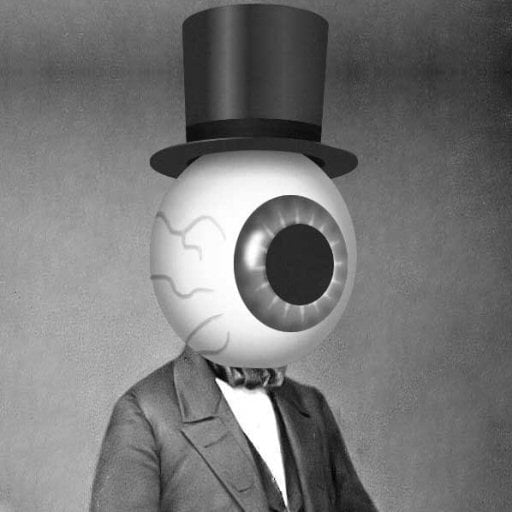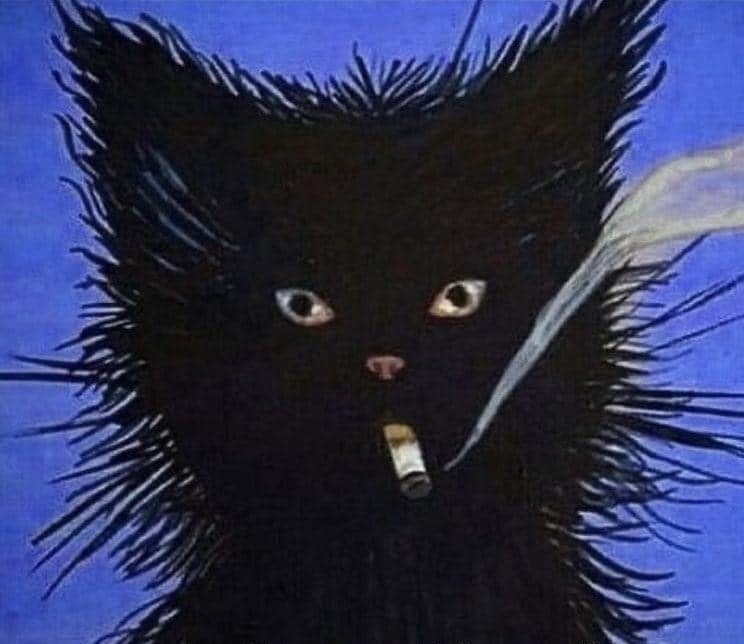It’s 1.75mm filament going into 2mm layers. lol, wtf. Still looks great, though.
As odd as it sounds, as long as you can feed enough filament into the melt zone faster than it can come out the nozzle you can make larger widths and heights than the actual filament width itself. It’s technically just packing it in.
I can only imagine how hard it had to be to tune the retraction though
I’m guessing vase mode is your friend with a nozzle wider than your filament.
It’s technically just packing it in.
This is what isn’t making sense to me, if the opening to the nozzle is 2mm and the filament is 1.75, what is it “packing in” against? Why doesn’t it just go through the center of the hole in the nozzle?
My guess, it probably does just “go through” the center of the nozzle (leaving 0.125mm clearance on either side), until it presses against the build plate/ previous layer, and it then squishes out to 2mm.
So it wouldn’t necessarily be pushing filament into the nozzle faster than it can come out of the nozzle, since there’s nothing stopping it from freely flowing out of the nozzle; it’s pushing filament faster than the nozzle is moving, creating a buildup outside the nozzle equal to the desired layer size
Why doesn’t it just go through the center of the hole in the nozzle?
If you are asking about printing with bigger nozzle size than filament diameter, there should be positive pressure in all parts of hotend and filament is just moving slower where bigger cross section is. I don’t have experience with this kind of printing tho.
Btw, where did you find that nozzle is 2 mm? In video they mentioned printing 2 mm layer height, but that doesn’t define the nozzle size. You can print different layer widths and heights with the same nozzle. Good cross section is recommended for decent layer bond, but it looks like they are just laying the filament down with no squish.
For proper 2 mm layer height I guess we need 4 mm nozzle and 6 kg hotend/extruder lol
there should be positive pressure in all parts of hotend
This is where the issue lies.
You know those old school, piston style squirt guns?

These work similar to a normal 3d printing setup, the water in the tube is the unmelted filament, the nozzle is the nozzle, and the water spraying out is the extruded filament. This works because the water (unmelted filament) is being pushed through a hole smaller than it’s own diameter, creating the positive pressure you mentioned.
If I remove the nozzle, such that the opening is the same size as the tube, or even widen the nozzle so the opening is wider, there’s no way for any pressure to build up, and the water/filament won’t be propelled/ “extruded”, it will simply pour out the end as if pouring out a cup of water (or hand feeding filament through a tube). It doesn’t matter how fast I pump the water gun, or extrude the filament, as long as there isn’t anything restricting the flow, there’s no way to build up pressure.
All of this to say, of course there’s something that makes it possible because we’ve got a video of it. But there’s more at work than simply, “feed more filament than is able to flow”, because as the video explains, the nozzle is wider than the filament and thus not restricting the flow.
My guess is either it is not a typical, hollow nozzle; there may be some kind of baffling for lack of a better term that disrupts the flow of the filament, pushing it to the edges of the nozzle. Shitty sketch of what I’m describing:

Either this or at the beginning of the print the nozzle stays in place and extrudes in one spot until enough has built up for it to start moving. I’m leaning more towards the blocking in the nozzle though, that would creat the positive pressure inside the hotend like the printer is used to.
Interesting comparison with water gun, but that would be equivalent of extruding in the air (even then I see it possible if the nozzle is not way too big). Think about connecting water pipe to a bigger diameter pipe. Water would fill the whole volume and it would just move slower if flow is laminar. There is also filament infront of the nozzle while printing so that should provide resistance (plus friction in the nozzle) to allow pressure build up. Nozzle shape might be important here, but I guess they just drilled 2.4 mm hole all the way through.
I obviously don’t know much about this nozzle, I’m not trying to teach anyone, I’m just having fun brainstorming and hopefully learning something new
I obviously don’t know much about this nozzle, I’m not trying to teach anyone, I’m just having fun brainstorming and hopefully learning something new
Exactly what I’m doing! Haha.
My problem with the “water into a larger diameter pipe” idea is that, while the filament is melted, it isn’t a free flowing liquid that expands quickly to fill it’s container; I’m trying to picture the balancing act that would be required to get the filament to expand by pushing against the build plate/ previous nozzle, but I can only see it ending in a nasty clog.
You’re probably right and it’s likely much more simple than I’m making it out to be. I still like my idea of a baffled nozzle, though. Haha
The nozzle is 2.4mm.
Thx for the link!
Here is an alternative Piped link(s):
https://www.piped.video/watch?v=r7kMwPnydkk
Piped is a privacy-respecting open-source alternative frontend to YouTube.
I’m open-source; check me out at GitHub.
Extrusion is a mix of temperature, feed rate, speed and pressure.
Basically the hotend temp could be high enough that the plastic melts but it still “pushes” just fast enough to build pressure to drive it. Not too much, otherwise the filament grinds and extruder skips, but at the right amount you can keep up with the feed.
The nozzle, lifted up a bit, moves slow enough that the filament comes out and spreads out from the pressure pushing on it. Making the line wide and tall.
The dance is keeping those in sync. Move too fast and the lines are thin, too slow and they’re too wide.
Nozzle too high and it doesn’t blend into the layer below as much as sit on top. Too low and the extra pressure pushes the filament around and it curls back up onto the nozzle.
This makes me curious about the effect of nozzle shape on the output. Would a square holed nozzle work or look different than a normal round nozzle? What about an oval or star shape? Hmmm.
A little but nothing too fancy. Probably just make it hard to get consistent line widths.
Closest analogy is a hot glue gun. Unless you’re lifting up as you extrude to make a “dab” it’s just going to smear as it moves sideways
Yeah that sounds about right. Maybe it would have potential applications with non-planar printing? That’s still pretty experimental territory I think.
Let’s see that part cooling system.
Feed that beast into a CPAP cooling duct setup, the part will pretty much go flying across the room when bridging lol
That’s pretty cool!
The nozzle itself is 2.4mm. https://www.youtube.com/watch?v=r7kMwPnydkk
Here is an alternative Piped link(s):
https://www.piped.video/watch?v=r7kMwPnydkk
Piped is a privacy-respecting open-source alternative frontend to YouTube.
I’m open-source; check me out at GitHub.
Here is an alternative Piped link(s):
https://piped.video/shorts/VGvVog-J9YM
Piped is a privacy-respecting open-source alternative frontend to YouTube.
I’m open-source; check me out at GitHub.








